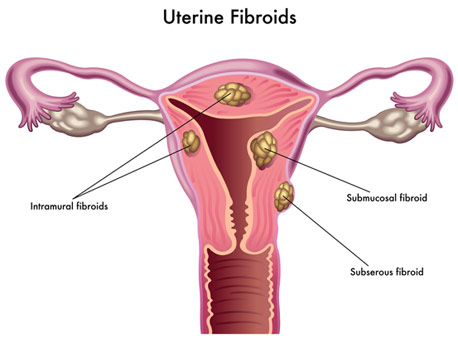Conditions & Treatments

Fibroids
Fibroids are non-cancerous swellings that grow in or around the womb (uterus). The growths are made up of muscle and fibrous tissue and can vary in size. Fibroids are sometimes known as uterine myomas or fibromyomas.
Many women are unaware that they have fibroids as they do not have any symptoms. This often means that fibroids are diagnosed by chance during a routine gynaecological examination, test or scan. If they are suspected, you may require more tests, such as an ultrasound scan, to confirm the diagnosis.

What causes fibroids?
The exact cause of fibroids is unknown. However, fibroids are linked to the female hormone, oestrogen. Oestrogen is the female reproductive hormone produced by the ovaries (female reproductive organs). Fibroids usually develop during a woman's reproductive years (from approximately 16 to 50 years of age).
Fibroids tend to increase in size when oestrogen levels are at their highest, such as during pregnancy. They are also known to shrink when oestrogen levels are low, such as after the menopause (when a woman's monthly periods stop at around 50 years of age). They do not disappear however, but just get smaller.
How are fibroids treated?
In many cases, fibroids do not cause symptoms and treatment is not required. Over time, fibroids will often shrink and disappear without any treatment.
However, around 1 in 3 women experience symptoms from fibroids, such as pain or heavy bleeding. In such cases, medication may be prescribed. If this doesn't work, other techniques, including surgery may be recommended.
In very rare cases, there may be complications due to fibroids, which can make it more difficult to become pregnant or affect a baby during pregnancy.
Types of fibroids
Fibroids can grow anywhere in the womb. The five main types of fibroids are described below.
- Intramural fibroids develop in the muscle wall of the womb and they are the most common type of fibroids found in women.
- Subserosal fibroids grow outside the wall of the womb into the pelvis and can become very large.
- Submucosal fibroids develop in the muscle beneath the inner lining of the womb wall and they grow into the middle of the womb.
- Pedunculated fibroids grow from the outside wall of the womb and are attached to the womb wall by a narrow stalk.
- Cervical fibroids develop in the wall of the cervix (the neck of the womb).
Who is affected?
Fibroids are common, with around 40% of women developing them at some stage in their life. They most often occur in women who are from 30 to 50 years old.
Fibroids are thought to develop more frequently (in around 55%) of women who are of African Caribbean origin. It is also thought that they occur more often in heavier women as a result of higher oestrogen levels.




